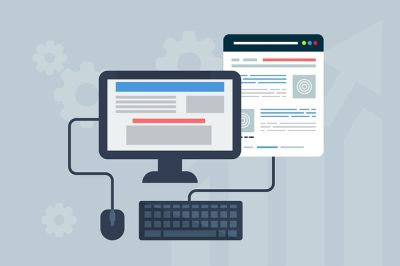How to Start a Medical Marijuana Dispensary

Patients purchase medicinal marijuana supplies from medical marijuana dispensaries. These dispensaries are authorized to sell the products patients need, such as edibles and ointments.
Cannabinoids from the Cannabis sativa plant are used to produce medical marijuana products. Medical marijuana products contain delta-9-tetrahydrocannabinol (THC), a psychoactive compound in marijuana that produces a high.
Cannabidiol (CBD) products are derived from hemp plants and only have trace amounts of THC.
Recent legal changes enable dispensaries to sell medical marijuana to customers with a prescription. Starting a medicinal marijuana dispensary is a great way to provide crucial resources patients need for their well-being.
Use the tips outlined here to launch your medical marijuana dispensary.
Learn about the industry
Before launching any business, you should take time to learn about the industry. Understanding your competition and the purpose of the industry can help you determine how to enter the market and compete effectively.
You may identify needs that your competitors aren’t addressing and prioritize addressing those needs with your products. Distinguishing your business is a great way to ensure your business attracts appropriate clientele so it can thrive.
The American Medical Marijuana Association website is an excellent resource with information about cannabidiol (CBD) products, CBD brands, and buying guides for various CBD and THC products, such as Delta-8 THC cartridges and CBD oils.
You can also learn how to make hash and cannabutter and which medications CBD products have poor interactions with. The American Medical Marijuana site also addresses state laws and federal laws regulating cannabis use, enabling you to learn about applicable laws in your region.
Selling medical marijuana involves ensuring your clientele have consulted their medical doctor and knows it’s safe for them to use medicinal marijuana products. Every consumer should discuss their health needs with their doctor before using medical cannabis products.
Although a prescription isn’t required, you should only sell cannabis products for medical use to patients with a doctor’s recommendation to ensure they won’t suffer side effects from negative drug interactions.
Create a business plan
Use the information from your research to develop a business plan. Your plan should identify your core business objectives, the type of business you’re launching, your ideal consumers, and how you’ll market services to the appropriate clientele.
Your business plan should also outline everything you need, including a physical dispensary location, staff, licenses, and permits.
Address financial matters
Prepare an operating budget outlining all the expenses you’ll incur during your first year of operations. You may have a separate budget detailing your start-up costs, including the cost of renovating a dispensary location and the cost of permits.
You should also develop revenue projections. Once you’ve decided which products you’ll sell, you can set sales targets and identify how much revenue you should generate.
Your budget and revenue projections are crucial. You can use them to determine where to reduce expenses. For example, you may curtail start-up costs by purchasing used equipment, such as storage cabinets.
You can also use your budget and revenue projections to apply for business loans through your bank or the U.S. Small Business Administration (SBA).
Determine which products you’ll sell
You need products to generate revenue. You may opt to focus on a range of THC products, including edibles such as gummies. If this is the case, as rosin is often used for infusing gummies, you may like to take a look at the article How to Cure Rosin for Perfect Flavor & Consistency for more information.
You need products to generate revenue. You may opt to focus on a range of THC products, including edibles such as gummies. You’ll also need equipment and supplies to sell your products in, as well as equipment used in the growing and manufacturing of cannabis products, such as micron bags when making rosin. You’ll need to account for all of this before you get started.
The CBD market is wide, and you can also explore other marijuana products, such as tea, bath salts, tampons, and gum. You may also opt to limit your products to Delta-8 THC, Delta-9 THC, and Delta-10 THC cartridges.
You can choose a Delta 10 cartridge that contains hybrids or Sativa. Delta-10 THC cartridges come in various flavors, such as ice cream cookies and Hawaiian haze.
While many consumers believe Delta-8 products are effective sleep aids, consumers may opt for Delta-10 when they need energy. Learning about the potential benefits of each type of THC cartridge ensures you identify the best products for your client’s needs.
Handle the logistics
Once you have the finances and permits, you need to open your dispensary and know what products you plan to sell, secure a location, renovate it, and hire qualified staff.
You should also contract a marketing team that can develop a promotional strategy to help spread the word about your dispensary. Order stock, train your staff and open your doors on launch day. A great promotional campaign ensures you’ll have clients to serve on opening day.
Launching a medical marijuana dispensary involves learning about the industry, developing a plan for your business, creating a budget and revenue projections, and applying for financing.
With financing, you can secure a location for your dispensary, acquire the products you plan to sell, hire staff, and launch a marketing campaign to promote your new business.






